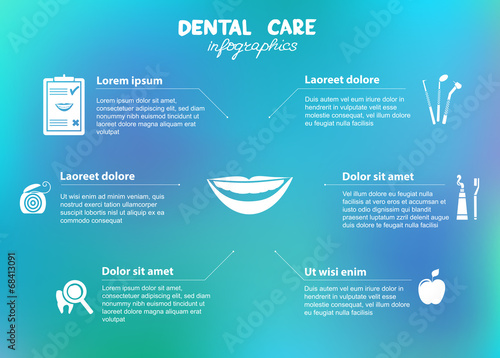The Perspective Of Dental Surgery: Revolutionary Innovations And Enhancements Shaping The Occupation
The Perspective Of Dental Surgery: Revolutionary Innovations And Enhancements Shaping The Occupation
Blog Article
Team Author-Petersson Mccall
Invite to the globe of dental surgery, where innovations and advances are shaping the future of the area! In this exciting realm, you'll witness the transformative power of robotics, the cutting-edge marvel of 3D printing, and the game-changing impact of minimally intrusive methods.
The future of dental surgery holds a promise of precision, performance, and boosted person end results. With the help of advanced robotics, surgeons are able to execute intricate procedures with higher accuracy and control.
3D printing technology is changing the development of oral implants and prosthetics, using personalized remedies that fit flawlessly right into each patient's one-of-a-kind anatomy.
In https://stephenojeys.smblogsites.com/33019458/sedation-dentistry-enhancing-person-comfort-and-decreasing-stress-and-anxiety-in-the-oral-chair , minimally invasive techniques are decreasing post-operative discomfort and recuperation time, allowing individuals to go back to their daily lives earlier.
Prepare to explore the interesting innovations and breakthroughs that are reshaping the landscape of dental surgery!
Developments in Robotics
One significant development in dental surgery is making use of robot technology, which allows for exact and efficient procedures. With the help of robot systems, oral cosmetic surgeons have the capability to carry out complicated surgical procedures with boosted accuracy, minimizing the danger of human error.
These robotic systems are furnished with sophisticated imaging modern technology and accurate tools that enable specialists to browse with detailed physiological structures effortlessly. By making use of robot innovation, doctors can attain greater medical accuracy, leading to enhanced client results and faster healing times.
On top of that, making use of robotics in oral surgery permits minimally intrusive treatments, reducing the injury to surrounding cells and promoting faster recovery.
3D Printing in Dental Surgery
To boost the field of dental surgery, you can discover the subtopic of 3D printing in dental surgery. This cutting-edge innovation has the prospective to change the method oral cosmetic surgeons run and deal with patients. https://www.vogue.com/article/best-teeth-whitening-products are four key methods which 3D printing is shaping the field:
- ** Personalized Surgical Guides **: 3D printing allows for the creation of highly accurate and patient-specific medical overviews, enhancing the accuracy and performance of treatments.
- ** Implant Prosthetics **: With 3D printing, dental specialists can produce tailored dental implant prosthetics that perfectly fit an individual's unique anatomy, causing much better end results and individual contentment.
- ** Bone Grafting **: 3D printing makes it possible for the production of patient-specific bone grafts, minimizing the need for traditional implanting methods and boosting recovery and recuperation time.
- ** Education and learning and Training **: 3D printing can be used to develop sensible surgical models for educational functions, allowing dental cosmetic surgeons to practice complicated procedures before performing them on clients.
With its potential to boost accuracy, customization, and training, 3D printing is an interesting advancement in the field of dental surgery.
Minimally Invasive Techniques
To further advance the field of oral surgery, welcome the capacity of minimally intrusive techniques that can substantially benefit both doctors and patients alike.
Minimally invasive strategies are changing the area by reducing medical injury, reducing post-operative discomfort, and increasing the healing process. These methods include using smaller sized incisions and specialized instruments to do treatments with accuracy and effectiveness.
By making use of sophisticated imaging modern technology, such as cone beam calculated tomography (CBCT), cosmetic surgeons can precisely plan and implement surgical treatments with very little invasiveness.
Additionally, using lasers in oral surgery enables specific tissue cutting and coagulation, resulting in reduced blood loss and decreased recovery time.
With minimally intrusive strategies, patients can experience quicker recuperation, lowered scarring, and boosted end results, making it a vital facet of the future of oral surgery.
Final thought
So, as you can see, the future of oral surgery is incredibly encouraging, with exciting innovations and advances shaping the area.
From the improvements in robotics to the use of 3D printing and minimally intrusive methods, oral cosmetic surgeons are revolutionizing the way they supply care.
While some may worry about the possible expense related to these advancements, it is essential to keep in mind that these innovations inevitably boost client results and reduce healing time, making them well worth the financial investment in the long run.
